
University of California, Irvine
Instructor: Dr. Barbara J. Becker

|
|
|
|
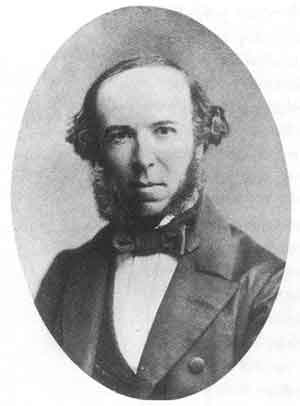
|
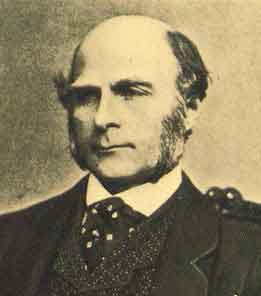
|
|
The power of man over animal life, in producing whatever varieties of form he pleases, is enormously great. It would seem as though the physical structure of future generations was almost as plastic as clay, under the control of the breeder's will. It is my desire to show more pointedly than--so far as I am aware--has been attempted before, that mental qualities are equally under control. |
|
 |
Graph showing the distribution of variations in a particular trait (height,
e.g.) in a large population.
± 1 standard deviation
± 2 standard deviations
± 3 standard deviations
|
Over generations, the mean measure of a trait will drift toward one
extreme if individuals at the other extreme are unable to contribute to
germ plasm.
|
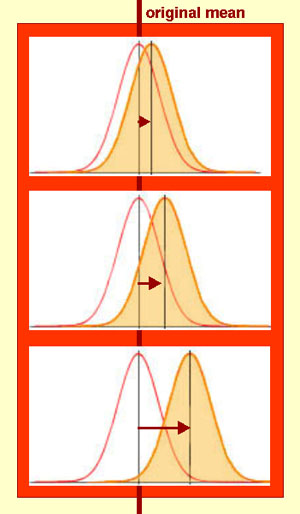 |
|
|
Aim--"to give the more suitable races or strains of blood a better chance of prevailing speedily over the less suitable" Can no longer rely on natural selection:
|
1904 |
Francis Galton funded Research Fellowship in National Eugenics at University College of London |
1906 |
established Galton Laboratory of National Eugenics |
1911 |
after his death, his estate created Galton Eugenics Professorship |
Karl Pearson (1857-1936)
|
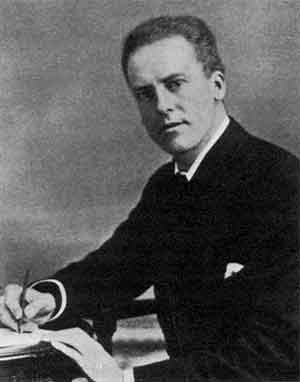 |
The right to live does not connote the right of each man to reproduce his kind.... As we lessen the stringency of natural selection, and more and more of the weaklings and the unfit survive, we must increase the standard, mental and physical, of parentage.--Karl Pearson, Darwinism, Medical Progress and Parentage (1912) |
|
|
|
At the turn of 20th century, fear that American germ plasm on verge
of collapse due to:
|
study by William Dugdale (1875) |
|
Max Juke (18th c Dutch farmer) had 709 descendents by mid-1870s, including: Conclusions:
|
|
study by Henry Herbert Goddard (1912) |
480 descendents of liaison with "feebleminded tavern
wench," including:
143 mentally deficient |
496 descendents of subsequent marriage
to "Quaker woman of good ancestry":
all good citizens (doctors, lawyers, judges) who married into good families with exception of 3 described as "somewhat degenerate" |
Conclusion: feeble-mindedness is a hereditary trait |
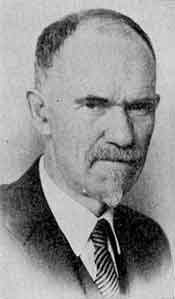 |
Charles Davenport (1866-1944)
|
Mission of the ERO:
|
| Methods advocated by the ERO for achieving these goals:
Sterilization Harry Laughlin advocated the sterilization of the lowest 10% of American population.
1927--Supreme Court legitimized compulsory sterilization It is better for all the world if instead of waiting to execute degenerate offspring for crime, or to let them starve for their imbecility, society can prevent those who are manifestly unfit from continuing their kind. The principle that sustained compulsory vaccination is broad enough to cover the cutting of the Fallopian tubes.--Oliver Wendell Holmes (Buck v. Bell, 1927) |
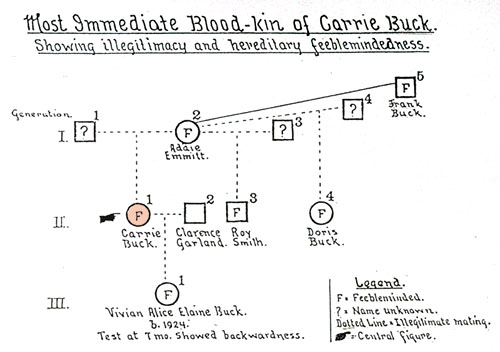
|
By 1930, half of states had sterilization laws in place.
|
|
|
|
______________________ Monday, March 10, 2003 State's Little-known History of Shameful Science Issues Eugenics Apology California's role in Nazis' goal of 'purification' by Tom Abate On Tuesday, a state Senate committee is scheduled to hear a historical truth that might shock most Californians: Almost 100 years ago, their state practiced a form of eugenics that helped inspire Hitler's Nazis. "California was the second state to pass eugenics laws in 1909," two years after Indiana made it legal to sterilize the "feeble-minded," according to University of Virginia bioethicist Paul Lombardo. Lombardo is an expert on eugenics, a school of thought popular around the turn of the 20th century. Eugenicists thought they could improve the human species through selective breeding, which meant preventing habitual criminals, inmates of insane asylums and sexual deviants from having kids. When Lombardo briefs the Senate Select Committee on Genetics, committee chairwoman Sen. Dede Alpert, D-Coronado (San Diego County), expects his talk will raise eyebrows. "I'll be the first to admit I had no idea this went on in California," said Alpert, adding that when Lombardo's state of Virginia confronted its history of eugenics, it prompted the state's governor to offer a public apology. "That may be the appropriate response here, but that's something that would come after we get the chance to hear it," Alpert said. Lombardo sketched out his two-hour presentation, "Eugenics: Lessons From a History Hidden in Plain Sight." As he explained it, it was around the turn of the last century when scientific thinkers, notably Sir Francis Galton, cousin of evolutionist Charles Darwin, began arguing that allowing the unfit to have children might weaken the human herd and should be controlled by law. After Indiana passed a pioneering statute allowing state officials to sterilize those deemed unfit to breed, California enacted an even stricter eugenics law. California made it legal for state officials to asexualize those considered feeble-minded, prisoners exhibiting sexual or moral perversions, and anyone with more than three criminal convictions. As Lombardo explained, by using the term "asexualization" instead of "sterilization," California's law went beyond ordering vasectomies in men or tubal ligations in women. California made it legal to castrate a man or remove the ovaries from a woman, permanently preventing reproduction. Lombardo said California's asexualization statute passed unanimously in the state Assembly, drew only one dissenting vote in the state Senate and was signed into law by Gov. James M. Gillett in 1909. It was amended at least twice, in 1913 and 1917, to shift the focus of California's eugenics program away from the castration of prisoners and toward the sterilization of insane asylum inmates. "If you look at the numbers of people from 1909 through 1950 sterilized in California, it's something on the order of 19,000, evenly split between men and women," Lombardo said. "My guess would be most of those were not castration but were vasectomies or tubal ligations, which are a lot cheaper, faster and safer." By the time state law was revised in 1951 to greatly narrow the state's authority to forcibly prevent procreation, eugenic sterilization had already fallen into disfavor, thanks to public revulsion at the revelations of Nazi atrocities before and during World War II, Lombardo said. But in the years after the state embraced eugenics, California intellectuals--including Stanford's David Starr Jordan and Louis Terman, popularizer of the IQ test--were leading advocates of the movement, he said. California was such a prominent practitioner of forced sterilization that it was held up as a model by the Eugenics Record Office, the Long Island think tank that was the movement's unofficial headquarters. The Eugenics Record Office, in turn, had links to the Nazi party during the 1930s. "There's lots of connections between the Germans interested in sterilization and the Americans," Lombardo said, adding that after Hitler took power in 1933, "the very first law passed by the Reichstag was the law for the sterilization of the hereditarily diseased." Lombardo cites an incident in which California's sterilization practices were held up as models for the Nazi regime. In 1935, Eugenics Record Office leader Harry Laughlin was invited to an international conference on eugenics in Germany. Unable to attend, Laughlin instead sent his German hosts a diagram displaying the pedigree of "a feeble-minded woman sterilized by the state of California."
The chart shows how the woman was born to a mother deemed by state officials to be "neurotic (and) feeble-minded" and a father termed a "drunkard (and) gambler (with) low mentality." The woman's ovaries were removed, a permissible form of asexualization under California law. The Germans were far more aggressive than their California contemporaries in practicing eugenics, Lombardo said. "They sterilized at the rate of 50,000-70,000 (people) a year, compared with California's slightly more than 4,000 in 1927," he said. While the Nazis practiced eugenics to "purify" their race, Americans had more pragmatic reasons for trying to prevent certain people from having children. "This was about saving money. It was the economic motive," Lombardo said, encapsulating the view of American eugenicists in these words: "We don't want you generating any more kids we'd have to pay for, and we don't think you could take care of the kid if you had it." The Nazi horrors revealed after World War II put the final kibosh on this paternalistic practice. But Lombardo has pulled together official documents indicating that as late as the early 1960s, judges in San Diego and Los Angeles counties were still ordering orchidectomies--removal of the testicles--as a condition for paroling sex offenders. One such letter, written in 1962 by the Los Angeles County probation department, mentions one judge who ordered more than 50 former prisoners, most of them guilty of child molestation, to undergo complete bilateral castration as a condition of parole. "The Supreme Court held that each defendant was free to refuse the proffered conditions of probation and to choose instead the punishment provided by law for the offense of which he was convicted," states the letter dated 41 years ago Wednesday. Looking ahead to his state Senate presentation, Lombardo said he fears that Americans, who have forgotten their eugenic excesses, could be beguiled into thinking modern science can cure social ills like poverty, crime and disease. "There's an impulse toward eugenics that is very much alive today," Lombardo said. "The basic belief that we can use science to engineer social progress is an idea that many Americans believe in. "The point of my presentation is not to paint science as something scary and Frankensteinian," he said, adding that "at least as we forge ahead in the new genetics we should take our history into account." Lombardo is scheduled to speak from 10 a.m. until noon in Room 113 in the State Capitol in Sacramento. The hearing is free. |
|
________________________ Wednesday, March 12, 2003 State Issues Eugenics Apology
by CARL INGRAM SACRAMENTO--It was a dark chapter in American history. For more than half a century, California and other states forcibly sterilized 60,000 mentally ill people as part of a misguided national campaign to eliminate crime, "feeblemindedness," alcoholism, poverty and other problems blamed for dragging society down. On Tuesday, Gov. Gray Davis apologized, placing California in a small group of states that have issued formal regrets. "To the victims and their families of this past injustice," Davis said in a statement, "the people of California are deeply sorry for the suffering you endured over the years. Our hearts are heavy for the pain caused by eugenics. It was a sad and regrettable chapter ... one that must never be repeated." As eugenics was practiced in California and 31 other states between 1909 and 1964, when it was stopped, individuals considered defective included alcoholics, petty criminals, the poor, disabled and mentally ill. About 20,000 people were involuntarily sterilized in an attempt to prevent their genes from being passed on to another generation. In 1929, California became the second state to adopt forced sterilization and accounted for a third of the total cases nationally during the 35 years that eugenics was state policy, said Paul Lombardo, an expert on eugenics.... The policy was horribly misguided and resulted in the human rights of thousands being routinely violated by a coercive government with the support of the Supreme Court, said Lombardo, a scholar on eugenics and a professor at the University of Virginia medical school.... He told the hearing of the Select Committee on Genetics, Genetic Technologies and Public Policy that Adolf Hitler's Third Reich borrowed generously from U.S. laws when it imposed forced sterilization on "undesirables." Lombardo, a lawyer and historian, said eugenics started with the goal of encouraging development of a world of healthy individuals who would pass along their best traits to the next generation. He said that many leading minds of the late 1800s and early 1900s supported eugenics. Contests were held to determine "perfect children," movies publicized the movement, and major foundations financed eugenics research, Lombardo said. He said supporters were successful in persuading the Los Angeles Times to run a series of favorable articles about eugenics in its Sunday magazine. Lombardo said eugenics was an "incredibly popular movement" and a household word in America because Americans "all wanted to help the children." Eugenics was defined as "to be well born" and to have a "happy heritage." "This was something that was going to clean up the gene pool," Lombardo said. At the time, the mantra was, "Let's get rid of crime and poverty. Let's have healthy children. Who could argue against it?" Many early supporters of eugenics became disillusioned with the movement, Lombardo said, when it got sidetracked into a policy for selective breeding. |
Unless conditions change, the population of the United States will, on account of the great influx of blood from South-Eastern Europe, rapidly become darker in pigmentation, smaller in stature, more mercurial, more attached to music and art, given to crimes of larceny, kidnapping, assault, murder, rape, and sex immorality and less given to burglary, drunkenness, and vagrancy than were the original English settlers.1924--Immigration Act--Charles Davenport (1911)
|
|
|
|
| Now that we know the laws of heredity, it is possible to a large extent
to prevent unhealthy and severely handicapped beings from coming into the
world.
I have studied with great interest the laws of several American states concerning prevention of reproduction by people whose progeny would, in all probability, be of no value or be injurious to the racial stock. I'm sure that occasionally mistakes occur as a result. But the possibility of excess and error is still no proof of the incorrectness of these laws.
|
|
American eugenicists were a varied group overall Views on German policy exhibited wide range:
Some saw Hitler as bold in enacting "necessary" laws: Many far-sighted men and women in both England and America have long been working earnestly toward something very like what Hitler has now made compulsory.--Leon Whitney, Secretary of American Eugenics Society (1934) |
|
|
1939--7th International Congress for Genetics
|
|
Trofim
Denisovich Lysenko (1898-1976)
|
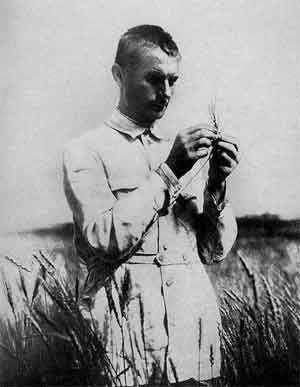 |
Crucial experiment:
In our present view there are neither winter nor spring varieties; there are only grains and grasses with varying degrees of "winterism" ... and we can artificially overcome "winterism."Practical advantages of "vernalization":
1935--difficult to be a Mendelian geneticist in USSR
1937
|
|
|
|
Early in decade:
|
|
|
|